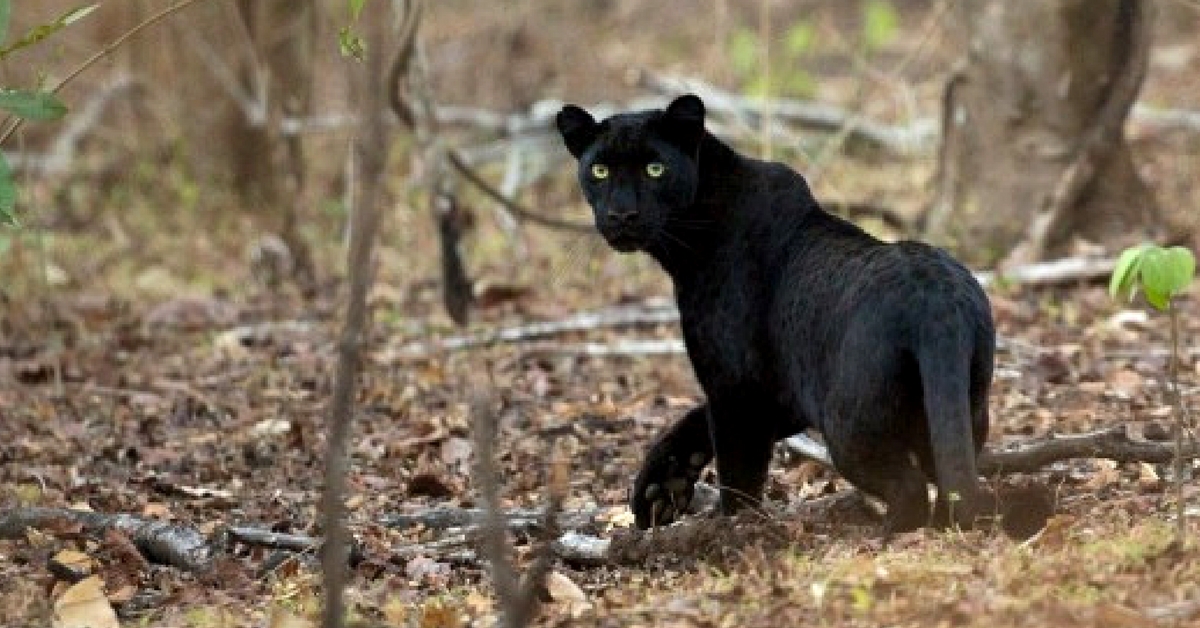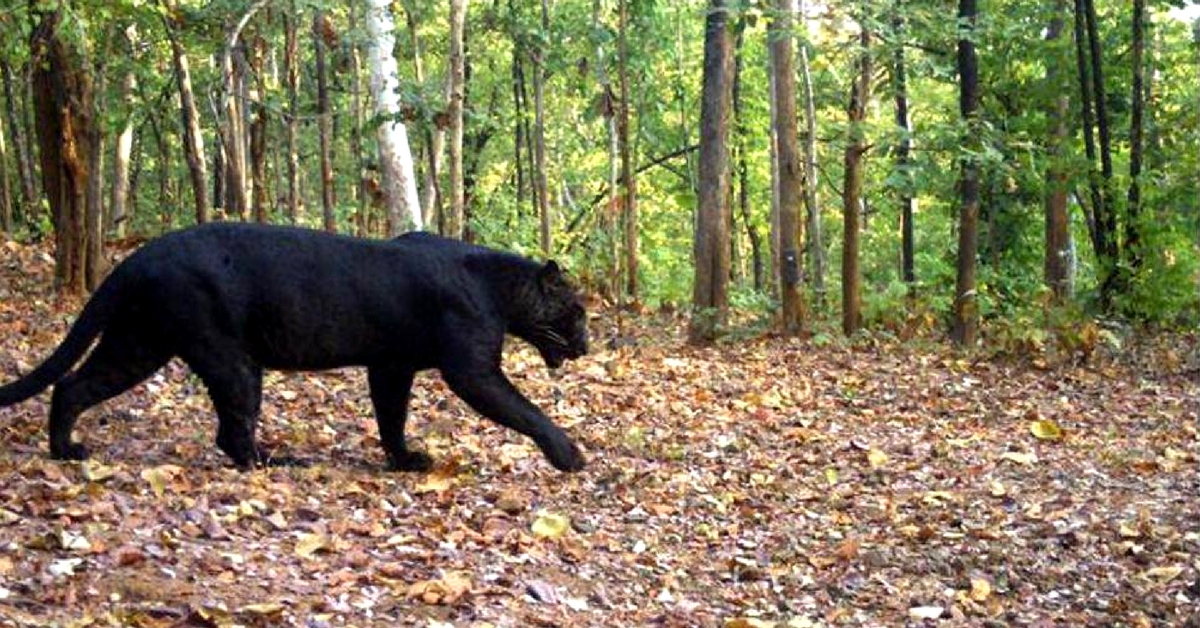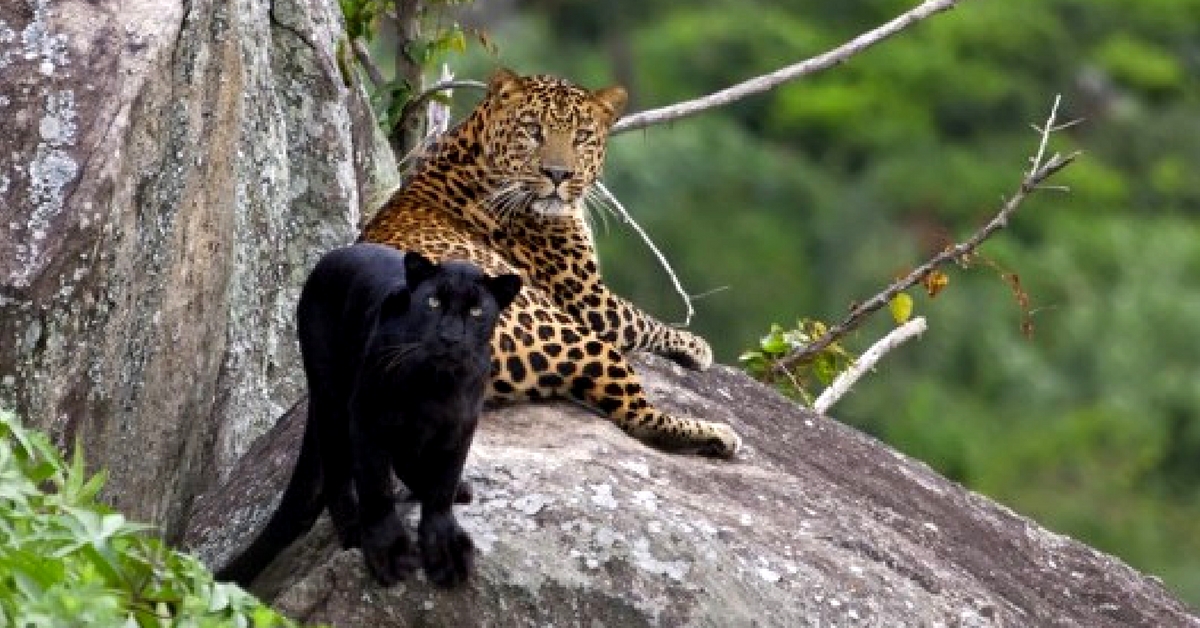Special Sighting: ‘Bagheera’ Spotted in Chhattisgarh After 24 Years!
This jet-black feline with piercing green eyes is just as shy as the leopard, but twice as hard to detect.

Walking through a dense forest is like solving mysteries without knowing what you are looking for. Whether it is the forests of Nainital, the royal jungles of Ranthambhore, or the thick woods of Dandeli, you always just experience a small fraction of what it has to offer.
However, even when you see a few birds and maybe a herd of spotted deer, you should know that the animals in the forest have most likely seen you from afar.
One animal that has always fascinated me is the leopard. This nocturnal big cat is usually shy, and hardly ever makes itself visible.
Its brown colour and black spots make for the perfect camouflage in dense jungles. If you are enjoying a safari, chances are that a leopard has already seen you and is hiding from plain sight. This nature of a leopard makes it an especially difficult animal to spot.
And rarer still is the black panther. This jet-black feline with piercing green eyes is just as shy as the leopard, but twice as hard to detect.

Dr Karanth, Associate Conservation Scientist at the Wildlife Conservation Society poetically describes the black panther in one of her reports. She writes, “It has always had a particular air of mystery… like a living shadow, more elusive than its perfectly camouflaged relatives.”
To many of us, a black panther is synonymous with Bagheera—Mowgli’s tough but protective mentor, who taught him all the necessary life skills. And yet we wonder why Rudyard Kipling zeroed upon an animal that is relatively rare in India. Was it only because of its mysterious, almost ghost-like looks?
For the first time in 24 years, a black panther was recorded on camera in the Udanti-Sitanadi tiger reserve in Chhattisgarh. In fact, the person who reportedly spotted a panther 24 years ago has no photographic evidence to support his claim.
So, how did this cat get in the forests of Chhattisgarh, and does this indicate a rise in the population of black panthers here?

Let’s start with speaking about the animal itself.
This “Bagheera” in Chhatisgarh has not travelled from some other jungle. It was presumably born there. In that case, there have to be at least one or two other black panthers, right?
Well, not necessarily. Black Panthers are essentially melanistic leopards. Commonly found in the dense tropical rainforests of Karnataka, Kerala and Assam, these wild cats are leopards with excessive black pigment melanin.
If you get a chance to see a black panther up close, or in optimum light, you will see it has the same spots as any other leopard.
Black Panthers are off-springs of leopards, they mate with leopards because they are…leopards (Panthera Pardus)!

Spotting (sorry about the pun) a black panther in Chhatisgarh can be great news for wildlife researchers although it says nothing about the population of either leopards or black panthers.
From as early as the 1800s, these mysterious panthers have been spotted in the relatively wetter eco-systems of India such as Anshi-Dandeli, Kabini, Sharavati and now Udanti-Sitanadi in Chhatisgarh!
You may also like: It Is Time We Showed the Leopard Some Compassion; Here’s What You Should Do
National Geographic undertook a research about the black panther population in India back in 2014. Out of the total 2500 camera trap images that were captured, only 10% captured black panthers. So, if you want to be one of those very few people who have seen a black panther in the wild, you will have to be very patient, attentive, and ready to be disappointed.
Leopards without melanisation are uncommon to find in forests, even in broad daylight. Add to that a jet-black agile cat, that silently sits on branches and makes absolutely no noise while walking, and you are in for one of the rarest spottings in Indian forests!
(Edited by Gayatri Mishra)
Like this story? Or have something to share?
Write to us: [email protected]
Connect with us on Facebook and Twitter.
NEW: Click here to get positive news on WhatsApp!
If you found our stories insightful, informative, or even just enjoyable, we invite you to consider making a voluntary payment to support the work we do at The Better India. Your contribution helps us continue producing quality content that educates, inspires, and drives positive change.
Choose one of the payment options below for your contribution-
By paying for the stories you value, you directly contribute to sustaining our efforts focused on making a difference in the world. Together, let’s ensure that impactful stories continue to be told and shared, enriching lives and communities alike.
Thank you for your support. Here are some frequently asked questions you might find helpful to know why you are contributing?


This story made me
-
97
-
121
-
89
-
167











